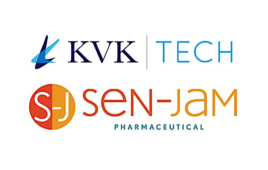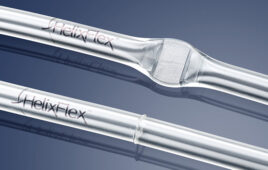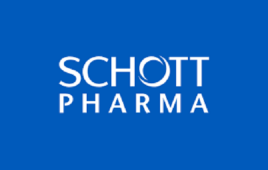
Figure 1: For better flexibility to produce a wider variety of targeted drugs, especially biologics, life sciences manufacturers are moving toward single-use options for operating both batch and continuous processing equipment.
Single-use instrumentation, especially new pH sensors designed for upstream and downstream applications, are helping manufacturers develop production suites for creating a greater variety of small-run yet highly targeted drugs.
Life sciences manufacturers already incorporate leading measurement and automation technologies to ensure the quality of the drugs and medicines they bring to market. Yet because the life sciences industry and associated products are evolving in many ways, it remains important for both manufacturers and OEMs to evaluate updated measurement and automation technologies to meet new needs.
In most industries, scaling up is the path forward to gain production efficiencies, with large batch sizes and high-volume production equipment. This has held true for many life sciences operations over the years. But there are several technical and market forces necessitating smaller and more nimble production methods. Designers and engineers are looking for new instrumentation to address these needs.
Industry movement toward “personalized drugs,” especially biologics, usually targeting specific smaller population segments, combined with the operational benefits of modern single-use instrumentation, are key trends favoring implementation of single-use methods. This article describes these trends and shows how single-use instrumentation is supporting these and other life sciences advances.
Personalized production
While most drugs are chemically synthesized, a bit like following a recipe, there is a growing category called biological products, which currently makes up about a third of the overall drug market. Biological products, also known as biologics, are complex mixtures.
These drugs can be isolated from natural sources, or they may be produced by biotechnology methods. They are therefore sensitive to heat and contamination, so carefully controlled aseptic production is essential. Biologics are on the leading edge of biomedical technology and are typically investigated for treating specific cancers or dementia.
Due to focus on creating different drugs for a greater number of limited-size populations, manufacturers must be more flexible and modular with their production methods. Smaller batch sizes with frequent changeovers call for appropriately-sized equipment, with correspondingly higher overhead costs for more frequent cleaning and operator intervention. Measurement and control implementations must be equally adaptable.
Many process industries prefer the efficiencies of continuous manufacturing, and some life sciences manufacturers are now implementing portions of smaller production suites using this method.
Upstream portions of the process tend to be batch, but downstream finishing portions can be continuous. For both batch and continuous processing of relatively small production runs associated with personalized drugs, manufacturers need practical, capable, and cost-effective automation and instrumentation solutions.
Single-use on the rise
Over the past two decades, the life sciences processing industry has undergone a shift toward single-use technology (SUT) production methods. SUT relies more on disposable elements, and less on permanently installed items which must be cleaned after each batch run whether in-situ or via removal and reinstallation, problematic in either case. Some examples are:
- Disposable bioreactor bags instead of a bioreactor vessel.
- Processing equipment, such as filters and chromatography skids, which incorporate various single-use technologies.
- Single-use instrumentation—for pressure, pH, and dissolved oxygen (DO) measurement—which will be discarded after each batch run.
One of the main factors driving single-use instrumentation is eliminating sensor sterilization processes. Conventional fixed-in-place manufacturing methods using stainless steel vessels and piping require significant effort and expense for sterilizing. Instrument sensors often need to be removed for these procedures to avoid damage, and then be sterilized and calibrated themselves. This is especially the case for pH sensors, which typically cannot be cleaned in-situ. Measurement of pH is particularly important for drug production, yet can be difficult when new, more challenging, environmental conditions are introduced.
Advancing single-use pH sensing
Some early single-use pH technologies were unable to match the established performance of traditional versions due to several reasons. They were significantly affected by the gamma radiation used to sterilize bioreactor bags, and they experienced high drift, which made them unsuitable for longer production runs.
For use in low-pressure and low-flow bioreactor bag conditions, several advancements have overcome these issues to make single-use pH measurement a realistic and preferred approach (Figure 2):
- A precisely constructed zero-leak connector form factor allows the sensor to be stored in a retracted and wetted position, and then extended into contact with the process media just prior to production startup.
- A specially developed phosphate-based buffer, which remains stable even after gamma irradiation, provides a long two-year shelf life, and enables a one-point calibration, even while the sensor is in storage before deployment.

Figure 2: This Emerson Rosemount 550pH single-use sensor and connector uses a unique form factor and specially developed buffer so the sensor element can be stored in a wetted and retracted position, then undergo gamma-sterilization, be standardized and finally inserted into contact with process media in a bioreactor bag right before startup.
These innovations have resulted in sensors capable of withstanding up to 30 pounds per square inch gauge (0 to 2 bar) of pressure, while operating in a range of 39 to 104 DegF (4 to 40 DegC). While these specifications are well within the limits of typical SUT bioreactor bags, even greater capabilities are needed to use a pH sensor for an inline piping measurement, which has typically been the domain of traditional devices used with stainless steel equipment.
Inline single-use pH
Inline single-use pH instruments are needed for all or most downstream processes such as chromatography, filtration, and purification skids and systems. These processes introduce additional demands for instrumentation related to high and/or variable pressure, flow, temperature, and vibration environments. It is difficult for any sensor, particularly pH, to provide a stable signal in the face of these conditions.
For industry to adopt single-use pH measurement in these inline flow-through processing environments, additional sensor advancements were needed to meet higher performance expectations while building on the success of current and proven technologies. Solving the problem took significant research and development work by a team with years of experience in the field. It was also necessary to develop a flow and pressure lab to properly evaluate technologies able to meet requirements (Figure 3).
Pressure was found to be a key issue with pH sensors because varying pressure changes the conditions at the reference junction, which in turn causes the measured pH to vary, introducing an error from the actual pH. Two patented improvements address this issue (Figure 3).

Figure 3: Emerson established this test setup to simulate the process conditions associated with a biological manufacturing process, and leading to patented improvements necessary to adapt single-use pH sensors for use in more demanding inline applications.
The first was creating a high viscosity gel to act as the reference electrolyte (1). Comprised of an electrolyte salt, a buffering system for adjusting the pH of the gel, and a polymeric gelling agent, the resulting gel also does not degrade under gamma irradiation. The second was designing a means for pressurizing the reference chamber just prior to operation (2). For a suitable shelf life, the reference chamber is stored in a depressurized state.
Together, the gel and pressurization create a single-use pH sensor which provides accuracy—within 0.1 pH— even under changing process conditions (Figure 4).
Consistent and continuous diffusion of reference KCl into the process is critical for reference electrode stability, but Figure 4a shows how external pressure changes disturb this action and result in sensor fluctuation. When a viscous reference electrolyte and an electrode pressurized to about 60 psi are incorporated, Figure 4b reflects good measurement performance with minimal sensitivity to pressure and flow changes.

Figure 4L: The trend on the left shows how traditional pH sensor performance varies with process changes, resulting in an increasing error as pressure increases. Single-use sensors for inline applications require a specific gel reference electrolyte and pressurization scheme to maintain measurement accuracy, even if pressure changes significantly.
Single-use pH sensors designed for inline processing equipment use now make it possible for manufacturers to realize the benefits of single-use in many more applications. They save on cleaning and sanitizing operations because they do not need to handle and protect instrumentation. A reduced need to calibrate is also a valuable advantage for continuously-operated equipment.

Figure 4R: As in FigureL, he trend on the left reflects how traditional pH sensor performance varies with process changes, leading to an increasing error as pressure increases.
Single-use pH instrumentation supports life sciences manufacturing trends
Single-use methods and instruments are already used for many life sciences production applications. As new drugs become more specialized, especially biologics, single-use technologies become more of a part of the manufacturing process. Best-in-class single-use instrumentation supports this shift in manufacturing.
About the authors

Ben Arriola
Ben Arriola is Emerson’s global business development leader for life sciences instrumentation. In this role, his focus is to help Emerson launch a new generation of analytical and measurement single-use instruments. Ben works closely with Emerson’s automation software and control device business units of Emerson to help the industry realize the vision of inline monitoring and real-time release of biopharmaceutical therapies. He is an active member of ISPE and BioPhorum, and he holds an engineering and a business degree, from the University of Minnesota.

Ye Lin
Ye Lin is currently a principal chemist at Emerson, specializing in the development of next-generation bio, liquid, gas, and combustion sensors, fuel cells, batteries, membranes, and catalysts. With a solid background in Chemical Engineering, Electrochemistry, and Materials Science, Ye Lin brings over 15 years of extensive research experience from universities, national labs, and industries. Holding a PhD in chemistry and chemical engineering, Ye Lin has made remarkable contributions to the field, including 9 US patents, 44 publications in prestigious journals, and an impressive citation count of over 3300.
All supplied figures are courtesy of Emerson
References
- Gamma-Irradiation-Compatible Reference Gel, United States Patent Application Publication US 0205946, Rosemount Inc.
- High Pressure Single-Use Electrochemical Analytical Sensor, United States Patent Application Publication US 0373502, Rosemount Inc.





Tell Us What You Think!